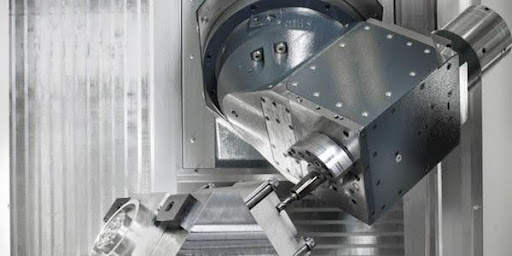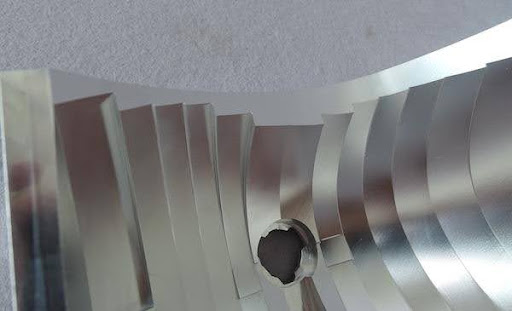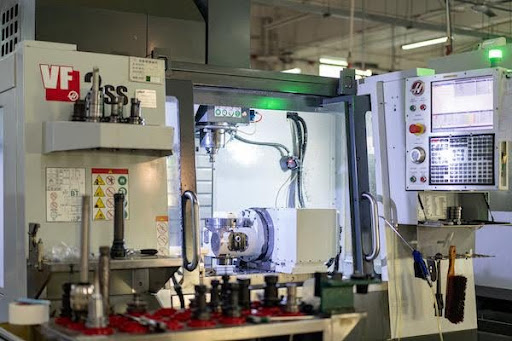Maintaining the integrity of advanced materials during CNC 5-axis processing can be a challenge. Advanced materials such as carbon composites and superalloys have unique properties that make it difficult to process them. On one hand, carbon composites are brittle and poor conductors of heat; on the other hand, superalloys are very hard and prone to chipping and cracking.
Maintaining their integrity during CNC 5-axis processing requires careful consideration of several aspects. From selecting high heat-resistant materials that are corrosion resistant, choosing solid carbide tools or diamond-coated tools to optimizing the cutting parameters, manufacturers have to consider it all.
Choosing the Right Advanced Material
Each advanced material has its own unique properties. Their ability to resist heat and corrosion and their strength are some common factors to consider when selecting the perfect advanced material. Carbon composites are brittle while superalloys are very hard, hence the product you want to design will require a material possessing specific properties.
Heat Resistance
One of the basic qualities an advanced material needs to have is its ability to stand up to extreme temperatures. The 5-axis processing is a rigorous routine that puts the material through harsh environments. When choosing a heat-resistant material, manufacturers need to look for three key elements:
Heat Deflection Temperature (HDT): We need to know at which temperature our material deforms under a load. The HDT is measured by putting a sample of the material under a constant load while subjecting it to a specific temperature. The temperature at which the material deforms in the HDT.
Glass Transition Temperature (Tg): When put up against extreme heat, advanced materials can become viscous and rubbery. Glass transition temperature (Tg) tells us the exact temperature at which the material loses its brittle and hard form. Manufacturers should take account of it when choosing the right advanced material.
Continuous Use Temperature (CUT): Last but not least, all advanced materials need to be used in an environment where they come in contact with high temperatures continuously. We should always keep in mind the maximum temperature an advanced material can endure continuously without losing its properties.
The best examples of heat-resistant advanced materials include nickel-based superalloys, ceramic Matrix Composites (CMCs), and refractory metals, such as tungsten, molybdenum, and niobium.
Strength
The weight-to-strength ratio of advanced materials is a critically important factor to consider. Manufacturers should always look to choose materials that are light in weight but high in strength. Advanced materials such as carbon nanotubes, titanium alloys, and metal matrix composites are incredibly lightweight and strong enough to be put through the 5-axis processing while maintaining their integrity.

Corrosion Resistant
The chemical composition, microstructure and surface treatment of advanced materials make them corrosion-resistant. Substances high in chromium content have a high corrosion resistance such as stainless steel. Fine-grained materials are generally more corrosion-resistant. Corrosion-resistant advanced materials are easier to maintain during 5-axis processing.
Selection and Preparation of Tool
Maintaining the integrity of advanced materials during 5-axis processing is largely dependent on machining tools. The axis travel of the processing machines tells us the maximum size of the product that can be processed. When selecting the processing tool, manufacturers need to consider the size of their material and their design. Only then will they be able to select a tool that accommodates the axis travel large enough for their desired design.
Another key aspect of the processing tool is the spindle speed and torque. These factors tell us which type of materials can be processed. The selection of the advanced material and the tool go hand in hand. The type of material determines the tool required for it. When choosing the right tool, make sure your spindle speed and torque align with the material you have chosen.
Some examples of 5-axis processing tools include solid carbide tools, diamond-coated tools, and polycrystalline cubic boron nitride (PCBN) tools. The solid carbide tools are best for handling high cutting forces. The diamond-coated tools are generally used to cut carbon composites and superalloys as they are very hard.
Optimization of Cutting Parameters
To keep these advanced materials intact while maximizing efficiency and productivity, we must look at certain optimizing parameters. This includes:
Adaptive Milling
Some advanced materials can change during the 5-axis processing due to uneven surfaces. Making real-time adjustments can help you fix the problem. Adjustments are made using force sensors, vibration sensors, and acoustic emission sensors. These sensors allow the engineers to collect data based on the tool path. The collected data is used in adaptive milling in some advanced techniques, such as closed-loop control.
Tool Path Optimization
To optimize the tool path, you need to choose the right option. High spindle speeds are the key to path optimization. However, some advanced materials can break or chip when put through excessive cutting speeds. Hence, an engineer should choose a speed that is fast enough for efficient machining and convenient for the material type.
The type of material, the tool diameter, and the desired surface finish determine the spindle speed. Softer materials, such as aluminum, can be processed at a higher speed as compared to hard materials, such as steel.
Speed and Feed Rate

Feed rate and speed should be slow enough that the advanced material does not lose its integrity and fast enough so that it can be processed efficiently. Once again, softer materials will have a higher feed rate. If the tool being used is mills, the feed rate can be higher as compared to drills.
Depth
The depth of the cut should also be optimized, small enough to not cause any damage to the material but deep enough that the machining can be done within the given time. Parameters such as the cutting tool engagement, that is, the percentage of the cutting tool engaged in the workpiece, determines the depth of the cut. A higher engagement percentage means a deeper cut. Other factors that determine cut depth include the type and geometry of the cutting tool and the desired surface finish of the final product.
Conclusion
When maintaining the integrity of an advanced material during 5-axis processing, we need to keep in mind certain key factors. Selecting the right materials that are strong, heat, and corrosion-resistant is the first step. Choosing the right machining tools and optimizing the cutting parameters ensure that our material’s integrity remains intact during the rigorous process.
